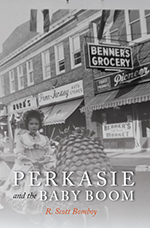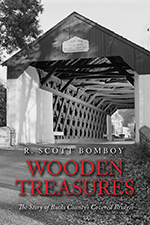Author and humanitarian Pearl S. Buck supported many causes during her lifetime, and her early support of the American civil rights movement is among the most important parts of her legacy.
Buck took a public stand against racism shortly before her return to the United States in the mid-1930s and then became a key civil rights supporter in crucial time in the battle for racial equality.
Until the publication of her second novel The Good Earth in 1931, Buck was an obscure figure in the United States. Her debut novel, East Wind, West Wind, appeared a year earlier to favorable reviews. Buck had also written some guest contributions for publications. However, within a year, Buck had become a bestselling writer in the country at the age of 40 and something of an enigma.
What was known about Pearl S. Buck to the general public was her upbringing as the daughter of missionaries in China; her ability to tell the story of the common people of China; and her new position as an expert in Chinese (and Asian) affairs. As far as Buck’s personal ideals and politics, very little was known publicly. That would change during the 1930s when Buck quickly became associated with the National Urban League, and then later the National Association for the Advancement of Colored People (NAACP) as she supported equal rights for Black citizens.
Pearl S. Buck, along with her friend Eleanor Roosevelt, became two of the biggest white supporters of the civil rights movement through the 1930s and 1940s. In Buck’s case, her statements made headlines in newspapers frequently during that era, including the leading mainstream and Black-owned publications of the day. An examination of those newspapers sheds new light on Buck’s expansive role promoting racial equality when the press was a key influencer of public opinion before the era of television.
In late 1932, Pearl Buck and her then-husband Lossing Buck visited the United States, in part, to accept her Pulitzer Prize for The Good Earth. On December 11, 1932, she had accepted an invitation to attend a tea hosted by the National Urban League as its guest speaker. In return, Buck agreed to write several pieces for Opportunity about race relations over the next few years. The first, “Race Relations and Race Pride,” appeared in January 1933, and it was the transcript of her talk a month earlier to the League. The remarks made it clear that the author had strong opinions about equality.
“As you know I have lived always among a race other than my own,” Buck told an audience at the YMCA in Harlem that had Black and White guests in attendance. “It has taught me not only to see and be ashamed of race arrogance in members of my own race, but I know through bitter experience what it is to suffer because others despise me for being white.” Buck recounted how she had almost lost her life, due to her race, in the 1927 riots in Nanking. She also was very candid that the speech was the first in her life given to a mostly Black audience.
An Early Supporter of Civil Rights
Buck’s speech was soon reported in the Black national press along with an unrelated public appearance by Margaret Sanger in Harlem. The Pittsburgh Courier called them both “serious-minded whites” who had a sincere interest in looking beyond stereotypes.
In June 1933, Buck’s second contribution to Opportunity was another speech transcript, “The Road To The Future.” This time the remarks came at a farewell dinner in New York in early May 1933, as Buck was leaving the missionary service but still returning to China. Buck’s words were even more powerful and drew more attention nationally to her stance on civil rights. She asked the mostly Black audience to accept her also as a Black person during the speech because of her experience in China. “Our greatest tragedy is that this is our country. We are not foreigners here. We belong here. We have nowhere else to go.”
Pearl and Lossing Buck then traveled back to China for a brief time. In March 1934, Buck’s next contribution to Opportunity dealt with a series of lynchings in America that she had learned about from the Chinese press. “A Letter From Abroad” was reprinted in at least 20 Black-owned publications. “I would not be a true patriot, I think, if I were to excuse or condone in any slightest degree the incredible news which has come flashing across the cables even to this far China, of the lynchings which have taken place in my country within very recent months and even weeks,” she wrote. “Those who were lynched were my countrymen. That their race was not mine makes no difference they were my countrymen. Because they were my countrymen, they had every right, no matter what their crime, to the privileges of the laws of our land.”
“I am quite aware that there are those among my countrymen who will say I do not understand the race problem. I reply, I do understand it. I have lived my life among colored races, a white child, a white girl, a white woman with two daughters. There is no aspect of the race problem which I have not faced and completely understood.”
By that time, Buck had returned to the United States, and she spoke at an event in New York sponsored by Opportunity in November 1933.
Over the next decade, Pearl Buck would contribute regular articles to Opportunity and serve on the National Urban League’s board of directors after her return to the United States. By 1938, Buck’s reputation as a national figure changed when she received the Nobel Prize for Literature. Among literary circles, her selection was controversial. But in America’s popular culture, the prize only amplified Pearl Buck’s voice as a respected national figure.
Buck made two very public statements about civil rights and race prejudice in the early 1940s that received wide national attention in newspapers. The first was a 2,300-word letter to the New York Times in November 1941 that refuted a newspaper editorial about a “crimewave” in Harlem. The second was her June 5, 1942 address at Howard University. Both events were widely discussed, and the remarks were repeated in Black-owned newspapers and in the Journal of Negro Education, a scholarly publication published by Howard University.
Pearl Buck Takes On The New York Times
On November 12, 1941, the Times editorial page recommended some solutions to the rise of urban crime in an editorial titled “The Other Side of Harlem.” The nation’s most powerful newspaper stated that a recent surge in crime was not the result of a racial problem in Harlem, but more of an economic issue that could be addressed with more job opportunities for Blacks along with more police protection. Buck’s response three days later set off a public debate into December, including the letter’s official recognition in the United States Senate a week after the Pearl Harbor attack on December 15, 1941.
“Your editorial of Nov. 12, ‘The Other Side of Harlem,’ denies the basic cause for the situation in our country of which the new manifestation of crime in Harlem is only a sympton slight enough for what it signifies,” Buck stated. “Race prejudice and race prejudice alone is the root of the plight of people in greater and lesser Harlems all over our country.”
Buck pointed out the general despair Blacks faced finding job opportunities, especially in an economy preparing for war. “The swiftness with which this long – gathering despair has come to a present head is due, perhaps, more than to any other immediate cause, to the refusal of the majority of defense industries to employ colored labor on anything like an equal basis with white labor. To the colored American this is final proof of the hopelessness of his plight, that even in the defense of his country he is not allowed his share of work.”
Pearl Buck then made a bold challenge to Americans, to reconsider their Constitution to include all Blacks as equals or to officially deny them full civil rights. “If the United States is to include subject and ruler peoples, then let us be honest about it and change the Constitution and make it plain that Negroes cannot share the privileges of the white people. True, we would then be totalitarian rather than democratic; but if that is what we want, let us say so and let us tell the Negro so. Then the white Americans will be relieved of the necessity of hypocrisy and the colored people will know where they are.”
Black newspapers like the Pittsburgh Courier reprinted the entire New York Times letter as their front page, with some added commentary. “We believe that the voice of Miss Buck is the voice America needs at this time. We further believe that here is one of the most pronounced and intelligent appeals yet made for national unity in this emergency,” the Courier’s editors wrote in a brief introduction to Buck’s letter.
The New York Age praised Buck but criticized the Times for not publishing similar letters submitted by Black writers. “Although we need all the friends we can get, and especially such articulate persons as Miss Buck, we do not feel that they should be set up as authorities on questions affecting us and given the place as spokesmen for the Negro in this country,” its editors wrote on November 29, 1941. A week after the Pearl Harbor attack, Senator Arthur Capper of Kansas had Buck’s letter read into the Congressional Record and asked for the Senate to consider her remarks about discrimination against Blacks in the defense sector.
During World War II, Buck and her husband, Richard Walsh, were involved in multiple projects related to events in Asia and China. However, Pearl Buck remained committed to fighting against racism, even when those battles included criticizing America’s war allies and decisions made by the Roosevelt administration. Her speech at Howard University in Washington, D.C., a historically Black university, in May 1942 contained elements of a world view that sought equality.
Buck told students that discrimination in the United States had to end. “We cannot fight for freedom unless we fight for freedom for all. We are not better than fascists if we fight for freedom of one group and not another, for the benefit of one race and not another, for the aggrandizement of a part and not the betterment of the whole. And we must be better than fascists.”
Returning to a theme Buck often spoke about during the war, she presented race prejudice as a world problem, with the American war effort as a key part of a movement toward global equality. “You are not simply a group of people in one country. You are part of the great war of the peoples’ freedom. They are not only colored peoples against white. There are many white people on your side and white people in many parts of the world who are subject, too, to tyrants,” she reminded the graduates.
The Howard speech was met with a mixed reception. For the most part, the mainstream media downplayed the speech. Gordon B. Hancock, a syndicated columnist for the Associated Negro Press, found Buck’s comments lacking. “But those of us who expected Miss Buck to give us a formula of deliverance must have been disappointed by her Howard address, for she held out little hope for immediate corrections and redresses such as the Negro rightly craves. Miss Buck told us that prejudice is the crux of the situation; but just how to quickly overcome or destroy this her suggestions were rather faltering,” Hancock wrote.
Pearl Buck’s remarks at Howard University became part of a larger pattern of commentary in her personal appearances and writings through 1945. Buck tried to balance patriotism with a need for global equality that included an end to the era of colonialism. That included opposing the presence of European nations as colonial rulers-the same nations that were America’s war allies. Buck also strongly opposed Chiang Kai-Shek, the Nationalist China leader, and had at best a lukewarm relationship with Winston Churchill. These competing objectives made Buck a more controversial figure as the war dragged on to its conclusion, and China’s fate hung in the balance.
By 1950, Pearl Buck’s role as an advocate for civil rights had lessened for several reasons. Most importantly, Buck became less of a constant national media presence when she and Richard Walsh opened their own adoption agency, Welcome House, based out of their Bucks County home in 1949. And in 1950, Buck decided to openly write about her intellectually disabled daughter, Carol, in a magazine article, and then a book.
Buck was still involved in promoting civil rights through the 1950s, most notably in a controversy when the Washington, D.C. school district banned her from speaking at a segregated high school. The uproar made national headlines and forced the school district to abandon its policy of seeking congressional approval of guest speakers at its schools.








